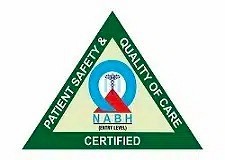Pediatric respiratory failure is a situation where a child’s lungs cannot supply enough oxygen or remove carbon dioxide effectively. Understanding this condition is crucial for early intervention, which can be life-saving. Globally, respiratory problems are some of the most common health issues affecting children, underscoring the importance of awareness and knowledge among caregivers and parents.
What Is Pediatric Respiratory Failure?
Respiratory failure in children occurs when their lungs can’t do their job well enough. This means either oxygen levels are too low or carbon dioxide levels are too high in the blood. There are two types. Acute respiratory failure happens suddenly, while chronic forms are ongoing. For kids, healthy lungs are essential as they help in moving oxygen into the blood and taking carbon dioxide out, ensuring the body works properly.
Why Are Children More at Risk of Respiratory Failure?
There are several reasons why kids are more at risk for respiratory failure. Their lungs and airways are smaller compared to adults, making it harder for them to cope with problems. Kids might not always be able to let you know they’re having trouble breathing, which complicates diagnosis. In countries like India, pollution can worsen the problem, increasing the risk further.
- Children’s airways are small, thus easily blocked.
- They have less reserve oxygen in their bodies, meaning they can go into respiratory failure faster than adults.
- They may not express symptoms effectively, so watch for any signs of distress.
Parents should be vigilant, especially in areas with high pollution. It’s crucial for them to notice if their child has trouble breathing and seek help quickly.
Unveiling the Common Causes of Respiratory Failure in Children
Several factors can lead to respiratory failure in kids. These include:
- Pneumonia: This infection can fill the lungs with fluid, making it hard to breathe.
- Bronchiolitis: Common in kids under two, this causes swelling in small airway passages.
- Asthma: Chronic asthma can cause airways to narrow, leading to difficulty in breathing.
- Croup: This leads to swelling in the throat, causing breathing problems.
- Chronic Lung Diseases: Conditions present from birth affecting the lungs can be a cause.
- Neuromuscular Disorders: These make it hard for children to breathe deeply or cough, affecting breathing efficiency.
Sometimes rare conditions that affect the heart or lung function can also cause trouble. Real-life stories often highlight how these issues can lead to pediatric respiratory failure, stressing the need for prompt care.
Signs and Symptoms Parents and Caregivers Should Notice
Identifying signs early is vital. Here’s what parents should watch out for:
- Rapid Breathing: Fast breaths more often indicate stress on the lungs.
- Cyanosis: This refers to a blue tint around the lips or skin.
- Chest Retractions: See if the chest seems to pull under the ribs while breathing.
Lethargy or confusion may also be present if respiratory failure sets in. In urban India, lifestyle factors could exacerbate these signs, making early recognition crucial.
Diagnosis Process for Pediatric Respiratory Failure
Understanding how doctors figure out what’s wrong is important. The initial steps involve checking oxygen levels with a pulse oximeter. Sometimes, hospitalization may be necessary for thorough observation. Advanced tests include analyzing blood gases or taking images of the chest. In places like India, accessible healthcare systems are crucial for timely diagnosis and management of these issues.
Management and Treatment of Respiratory Failure in Children
When a child is diagnosed with respiratory failure, the first response is often providing oxygen. Treatment is usually customized to tackle specific causes. For bacterial infections, antibiotics might be necessary. Technological help, like using nebulizers or mechanical ventilators, can be beneficial. Parents should feel assured as efficient pediatric care is available to help manage such crises effectively.
Preventive Measures and When to Seek Medical Help
Prevention plays a big role. Vaccinations are vital in preventing serious lung conditions. For chronic issues like asthma, routine check-ups and action plans are important. Quick response to any signs of respiratory failure is vital. Keeping a safe living space can help; reduce exposure to smoke, dust, or allergens which could provoke breathing issues.
Conclusion
Dealing with respiratory issues in children demands timely intervention. Being informed about pediatric respiratory failure causes not only helps in understanding but in managing them efficiently. Parents should trust their instincts and seek medical attention whenever in doubt. Knowledge empowers families, ensuring children are given the best chance for a healthy life.
Consult us today at Bluebird Children’s Hospital for expert guidance!






